Iran is a treasure mine of amazing ancient buildings, with a history spanning thousands of years. The nation is home to a multitude of breathtaking locations that highlight the inventiveness and artistic ability of its previous civilizations, from massive palaces to ancient ruins. This blog article will provide a virtual tour of Iran’s top ten historical architectural landmarks and an overview of the stunning country’s built environment.
Persepolis
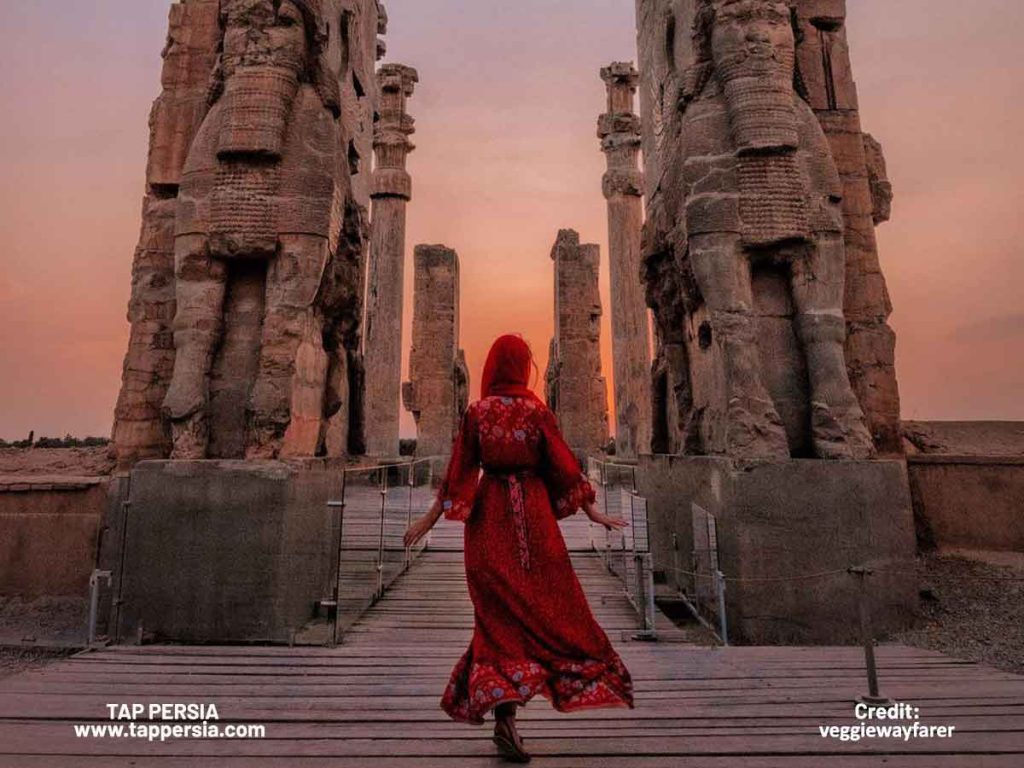
- The enormous structure known as Persepolis is located 60 kilometers northeast of Shiraz and dates back thousands of years.
- Between 550 and 330 BC, under the Achaemenid Empire, it served as a palace for Iranian celebratory rituals.
- The ruins of Persepolis feature remains of enormous columns, two royal palaces and gardens.
- These remnants showcase the wealth of Iranian architecture and stand as a testament to the grandeur of the past.
- The gate situated here is called “The Gate of Nations,” which has remnants of several distinct titles on the wall.
- Persepolis’ historical significance and its well-preserved ruins make it an endless potential as a tourist attraction.
Khaju Bridge
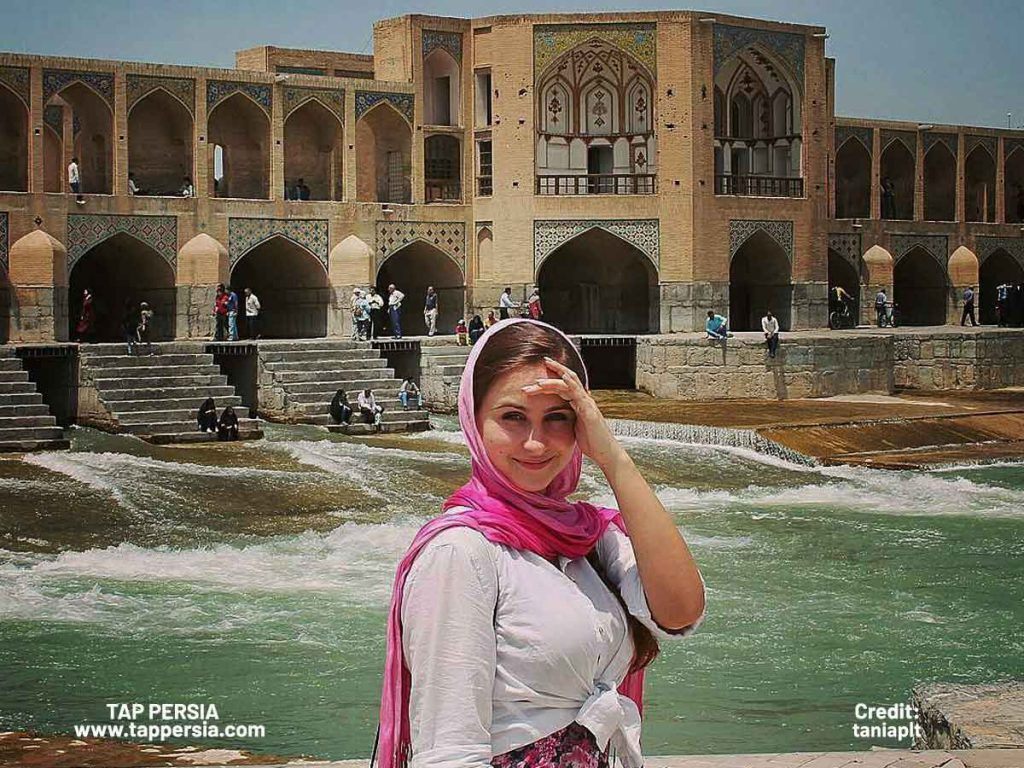
- Khaju Bridge was constructed in 1650 by the Persian Shah Abbas during the Safavid Dynasty.
- It serves multiple functions as a bridge, dam and popular venue for public gatherings.
- The bridge spans the Zayanderud River and features 23 arches that extend for 133 meters.
- However, due to the construction of the Chadegan Reservoir dam in 1972, the flow of water beneath the bridge has significantly reduced.
- As a result, the Zayanderud River is mostly dry throughout the year.
- The reduced water flow has impacted the liveliness of the city center, which was once vibrant with the presence of the river.
Naghsh-e Rostam

- Naghsh-e Rostam is a popular tourist destination located approximately 12 km northwest of Persepolis.
- It served as the burial site for the Achaemenid rulers and was built in the middle of the highlands.
- Despite Alexander the Great’s invasion, the tombs at Naghsh-e Rostam have retained their magnificent appearance and are considered a masterpiece of Iranian design.
- The intricate engravings on the stones were a challenging feat, requiring laborious work under the scorching sun.
- The dedication and craftsmanship required to create such inscriptions are a testament to the skill and perseverance of the ancient artisans.
Golestan Palace

- The Golestan Palace is a collection of seventeen buildings that were once part of Tehran’s citadel walls.
- The palace complex showcases gardens, traditional Iranian crafts and historic royal buildings.
- Most of the buildings were constructed between 1797 and 1834, during the Qajar Dynasty.
- Unfortunately, during Reza Shah’s rule from 1925 to 1945, many of the city’s structures, including parts of the Golestan Palace, were destroyed.
- Reza Shah believed that the city’s historic architecture should not hinder its modern development, leading to the demolition of numerous historical buildings.
- Despite the losses, the remaining structures of the Golestan Palace continue to serve as a testament to the grandeur of Iranian architecture and cultural heritage.
Pasargadae
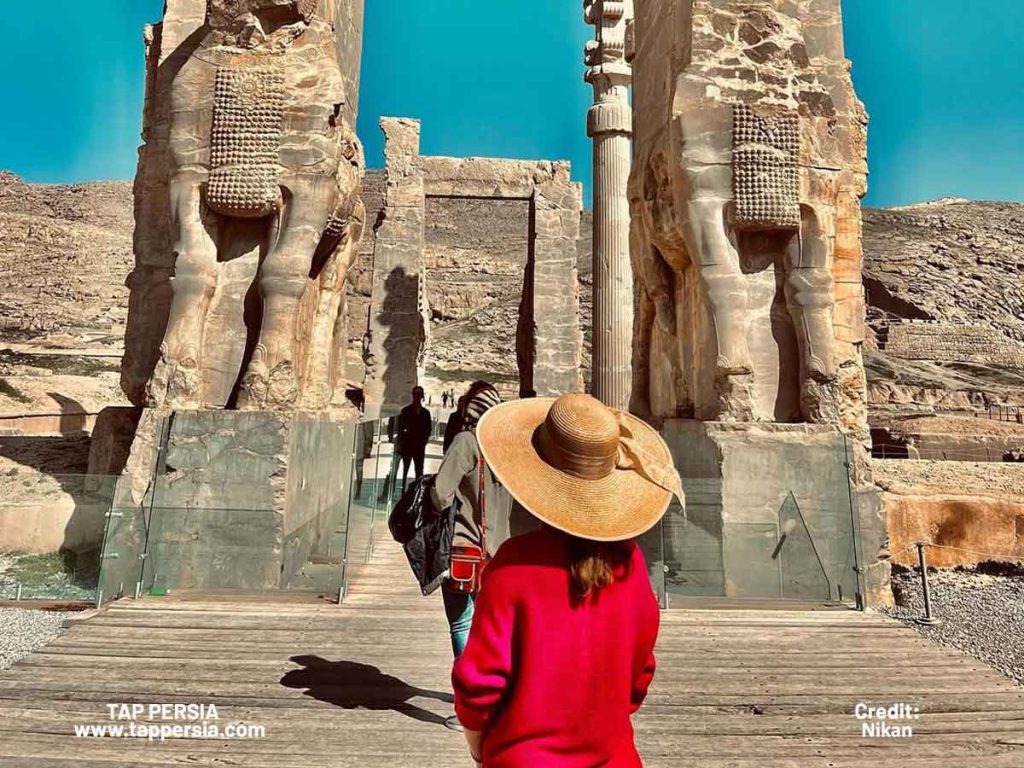
- The tomb of Cyrus the Great is located in Shiraz, Iran.
- Cyrus the Great, the founder of the Achaemenid dynasty, constructed the capital city of Pasargadae in 546 BC.
- The main structure of the tomb is situated atop platforms, giving it a distinct architectural shape.
- Cyrus’s tomb was built under his own initiative shortly before his death and was preserved and revered throughout the Achaemenid era.
- Along with the tomb, the site also includes palaces and halls, making it one of Iran’s most popular historical destinations.
- The tomb of Cyrus the Great stands as a testament to his legacy and the grandeur of the Achaemenid dynasty.
Nasir al-Mulk Mosque

- Nasir Al-Molk Mosque in Shiraz is a must-visit site in Iran for an immersive and great experience.
- The interior of the mosque offers a breathtaking view with its colored glass windows that filter sunlight, creating a mesmerizing play of light and colors.
- Visitors will often be seen with cameras in hand, capturing the beauty of the mosque.
- The intricate designs and exquisite tile work further enhance the ethereal and surreal splendor of the mosque.
- The Nasir Al-Molk Mosque is a magnificent example of Iranian architecture and is considered a hidden gem waiting to be discovered by the world.
Aali Qapo


- Aali Qapo Palace is a stunning example of Iranian architecture located next to the Shah Mosque in Naghsh-e Jahan Square.
- The palace impresses visitors with its multiple levels and intricate Iranian architectural design.
- Accessing the enormous hall and the two halls above it can be done by walking up through the small entrance.
- The palace features two masterpieces: a music hall on the east side with a view of Naghsh-e Jahan Square and a grand porch on the second story.
- The foundation of the porch consists of eighteen wooden columns, adding to the architectural charm.
- Aali Qapo Palace served as Shah Abbas Safavid’s guest lounge and showcases exquisite Iranian architectural ornamentation.
- The palace’s remarkable design and ornamentation make it a must-see destination for those fascinated by Iranian architecture.
Vank Cathedral
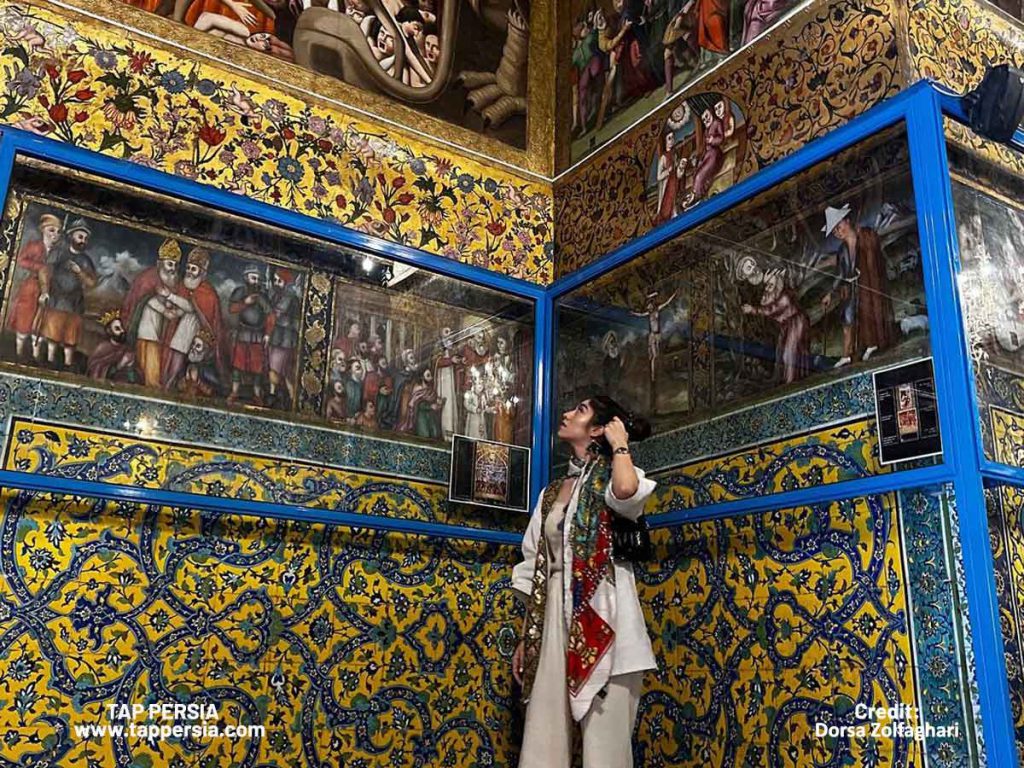
- The Vank Cathedral is located in the Armenian Quarter of Isfahan and showcases the fusion of Iranian and Armenian architectural traditions.
- It stands as a symbol of the peaceful coexistence of cultural groups within Iran.
- The cathedral is adorned with vibrant murals depicting biblical scenes and intricate carvings that narrate stories of religious significance.
- Its impressive dome reaches towards the sky, adding to its architectural grandeur.
- The cathedral represents the artistic and cultural diversity that flourished in Iran’s history.
- Visitors are captivated by the cathedral’s elaborate beauty, offering a glimpse into the rich traditions of Iran.
- The Vank Cathedral serves as a testament to the country’s multicultural heritage and historical significance.
Tower of Silence
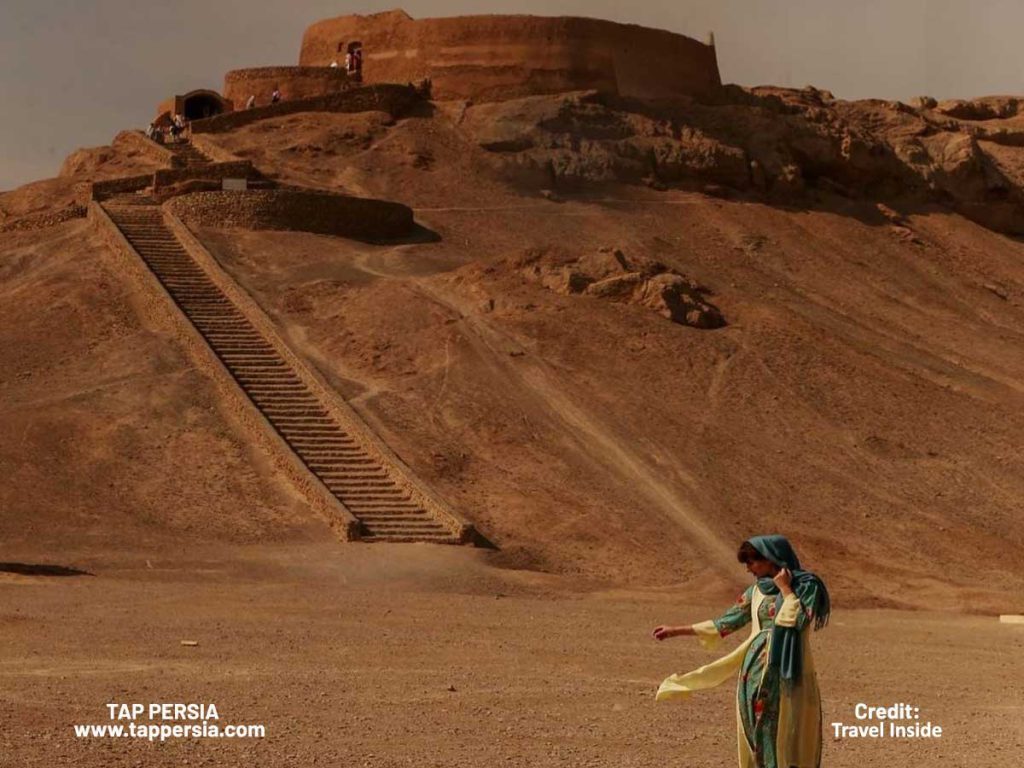
- Zoroastrians built the Towers of Silence as they believed burying a dead body in the soil would “pollute” it.
- The Towers were constructed at a high elevation, where designated caretakers would personally transfer the deceased to rest.
- These circular areas within the towers contained only bones, untouched by the sun or birds.
- Over time, the bones would be gathered and broken down by water and lime.
- The use of the Towers of Silence has been prohibited by Iranian law since the 1960s.
- At the base of the towers, ruins of a small town can be observed, mostly concealed by the desert.
- The Towers of Silence stand as a testament to the Zoroastrian burial customs and provide insights into ancient beliefs and practices.
Earth City of Yazd
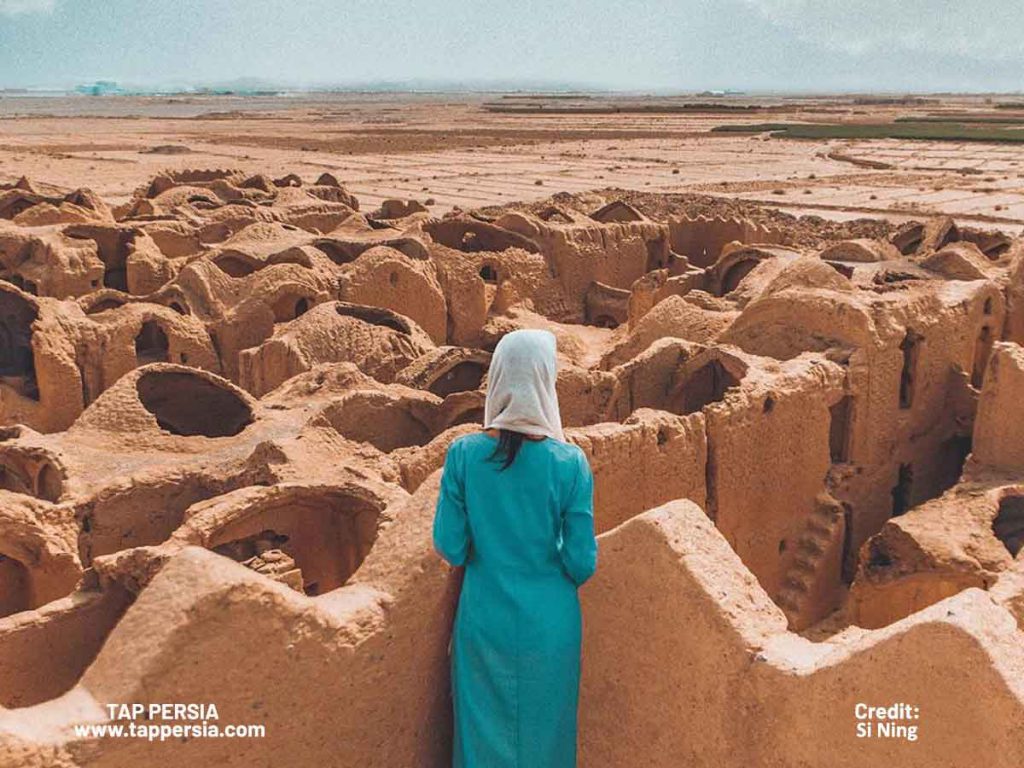
- Yazd features narrow alleyways and numerous ancient, one-story mud-brick structures, creating a maze-like city structure designed to confuse potential attackers.
- Most houses in Yazd have an interior courtyard, sometimes with a small pond, to improve air circulation and provide cooling for the buildings.
- Some wealthier residents may construct “wind-catchers” or “Badgir” to maximize airflow by drawing in fresh air into the courtyards and apartments.
- Climbing to the rooftops of buildings in Yazd offers a unique experience, with organic domes and beautiful “Badgir” structures creating an earthy environment.
- The rooftops provide a different perspective on Yazd’s historic architecture, offering a new viewpoint to appreciate the city’s unique design.
- Exploring the rooftops and experiencing the architectural features of Yazd gives visitors a glimpse into the city’s rich heritage and traditional building techniques.
Conclusion
Iran’s ancient architectural landmarks reveal the rich cultural legacy of the nation while providing an engrossing trip through time. A peek into the architectural marvels of Iran’s previous civilizations may be found at each location, from the majesty of Persepolis to the captivating beauty of Naqsh-e Jahan Square. These ancient locations offer evidence of the nation’s creative brilliance and rich cultural heritage, whether it is through their exquisite tile work, imposing domes, or breathtaking ruins.
The amazing workmanship and creative vision that built Iran’s architectural environment may be fully appreciated by tourists through an immersive experience of exploring these architectural masterpieces.




Comment (0)